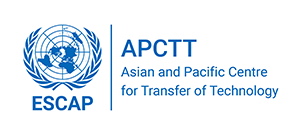Electrophysiological Method and Software to Recognize Amblyopia in Early Childhood Stage
Our partner, a Hungarian University has developed a new method and software to recognize amblyopia in early childhood stage. The client is seeking for collaboration in the framework of license, co-development, manufacturing, techno-commercial agreement. Background information Amblyopia (i.e. lazy eye) is a leading cause of permanent vision loss below age of 30 in developed societies. The incidence of this disease is about 6-7% in every population, independent of race or nationality. The main causes of amblyopia are mild childhood eye refractory problems (e.g. anisometropia) and/or eye movement disorders (e.g. squint), which result in a disturbance of visual cortical development. Failure to recognize the problem till 6 or 7 years of age makes the chances of recovery minimal. Irreversible consequences include the lack of binocular vision and impaired visual acuity in one eye. The degree of vision loss can vary from mild to complete blindness. This visual impairment not only creates a great hardship for the child, it can certainly limit future endeavors. Furthermore, if the good, non-amblyopic, eye becomes damaged (e.g. injury, illness) then the person immediately becomes visually disabled. Innovation of the technology The research team implemented an electrophysiological method, which is capable of recognizing the presence or lack of binocularity as early as six month of age. The clinical importance of this technique it that the earlier the detection of the problem, the more efficient the treatment will be. Due to the lack of verbal communication and cooperation, the evaluation of visual acuity is practically impossible by other methods from six month to 3.5 years of age. They also developed a quick, time effective and reliable method to detect amblyopia in early childhood. This method is capable of identifying all those childhood visual disorders, which may potentially lead to amblyopia after about 3 years of age. The test is based on dynamic random dot stereograms requiring two eyes to recognize a hidden object within the noise. Movies are generated on a laptop or tablet. In contrast to other static stereo tests, the perception of the 3D objects becomes more difficult, even for those who suffer from mild disorder. The results show that mild refractive errors and hidden squints can be identified easily.
Sector: Medical Technologies
Country: Hungary
Area of Application: - Healthcare establishments - Optics - Medical device manufacturers - Infant care specialist networks
Keywords: amblyopia; human electrophysiology, vision loss, binocular vision
Advantages: Main advantages - Can be used from early ages on children. - Easy to use on portable computers. - More sensitive than other existing technologies (E.g. Lang test, Visus test). - The time of examination becomes shorter. - Huge amount of data can be stored. - User friendly program surface. - Price / Value rate is outstanding.
Environmental aspects: Not Applicable
Development Status: Laboratory Model
Legal Protection:
Technical specifications:
Transfer Terms: Technology Licensing , Research Partnerships , Others , Manufacturing and Techno-Commercial Agreement
Target Countries: World Wide
Estimated cost (US$):
Upload any relevant document:
Contact Person: Laser Consult Ltd (Hungary)
Address: H-6701 PO Box 1191.
City: Szeged
Country: Hungary
Zip/Pin Code:

